The central exchange rate increased by 100 VND, the VN-Index increased by 0.88 points compared to the previous weekend, or the State Bank of Vietnam directed credit growth at about 16%, with adjustments appropriate to the actual situation... are some notable economic information in the week from February 10-14.
| Banking Industry: Striving together with the economy to accelerate and break through Banking business 2025: Expecting many bright colors |
 |
| Economic information review |
Overview
Right from the beginning of the year, the Government has drastically implemented measures to achieve 8% GDP growth by 2025.
At the 9th Extraordinary Session of the 15th National Assembly , opening on February 12, 2025, the Government proposed to the National Assembly to adjust the GDP growth rate in 2025 to reach 8% or more, about 1-1.5 percentage points higher than the target the National Assembly resolved at the end of 2024 session; the average CPI is about 4.5-5%.
Thus, the GDP scale in 2025 will be about 500 billion USD, the average income per capita will be about 5,000 USD. With the GDP scenario of over 8% this year, economic sectors will grow about 0.7-1.3% higher than in 2024. Industry - construction, especially the processing and manufacturing industry, will continue to be the driving force for growth.
According to the Government's calculations, by 2025, the total social investment capital is expected to be about 174 billion USD or more, equivalent to 33.5% of GDP. Of which, public investment is about 36 billion USD, equivalent to 875,000 billion VND, about 84,300 billion VND higher than the plan assigned for 2025 (790,700 billion VND). Private investment is about 96 billion USD, FDI is 28 billion USD and other investment is 14 billion USD. Total retail sales of goods and consumer service revenue (at current prices) this year will increase by 12% or more.
To achieve the common goal, GRDP growth of localities this year must be at least 8-10%, especially Hanoi, Ho Chi Minh City and localities with high growth potential in the country. Regarding the state budget, the Government proposes to allow the adjustment of the state budget deficit to about 4.0 - 4.5% of GDP to mobilize resources for development investment; public debt, government debt, and foreign debt may reach or exceed the warning threshold (about 5% of GDP).
The main solutions proposed by the Government to achieve the economic growth target of over 8% this year mainly include improving institutions, accelerating public investment disbursement, promoting private investment and processing and manufacturing industries... Previously, in Resolution 25/NQ-CP dated February 5, 2025 of the Government on growth targets for industries, fields and localities to ensure the national growth target in 2025 reaches 8% or more, the Government set the growth target for each locality (GRDP) to be from 8% or more, of which about 2/3 of localities have double-digit growth rates. The Government also assigned additional targets for industry and sector development in industrial production, tourism, and consumption associated with the responsibilities of ministries and branches.
Accordingly, the Ministry of Finance must reduce the proportion of regular expenditures to the total state budget expenditures to 60%, and the proportion of development investment expenditures to 31%. The Ministry of Planning and Investment ensures that the proportion of investment capital implemented in the whole society is at 33.5% of GDP. The Ministry of Industry and Trade is responsible for a number of targets such as the growth rate of total export turnover of goods by 12%, trade surplus of 30 billion USD, industrial production index increasing by 9.5%, total retail sales of goods and consumer service revenue increasing by 12%... The Ministry of Culture, Sports and Tourism is responsible for completing the target of attracting 22-23 million international visitors, 120-130 million domestic visitors...
The supplementary project on socio-economic development in 2025 with a growth target of 8% or more is expected to be discussed by National Assembly deputies in the hall on February 15 and voted on on February 19.
In order to complete the set goals, the Government has organized conferences, resolutely directing ministries, branches and enterprises to accelerate and make breakthroughs to promote growth. Specifically, at the conference with the banking industry on February 11, the Prime Minister outlined 8 groups of tasks and solutions that the banking industry and commercial banks need to focus on implementing in the coming time with a number of main tasks: (i) reducing operating costs, reorganizing operations more effectively, especially sacrificing part of their profits to reduce lending interest rates, supporting the economy, people, businesses, creating livelihoods for people; (ii) focusing on credit, contributing to renewing the three growth drivers: investment (public investment leads private investment), consumption (with credit packages for consumers, credit packages for key economic sectors, solving many jobs, shifting the economic structure...), export; (iii) The State Bank and commercial banks must be pioneers in digital transformation, applying science and technology, and building digital databases; (iv) building preferential credit packages for social housing, contributing to eliminating temporary and dilapidated houses, including incentives for young people who want to settle down and find a job....
The banking industry is determined that in 2025, the State Bank will target credit growth at about 16%, with adjustments appropriate to the actual situation; credit policy focuses on economic growth drivers, exploiting drivers such as consumer credit, credit for small and medium enterprises... Regarding interest rates and exchange rates, the State Bank believes that this is a very challenging task, commercial banks themselves need to review and reduce costs to try to reduce interest rates. In management, the State Bank also has channels to release money so that banks do not have to face difficulties in capital sources. Regarding exchange rates, the State Bank closely monitors and flexibly operates according to market developments. Regarding bad debt handling, the banking industry hopes to legalize Resolution 42 to remove difficulties in current practice.
On February 10, the Prime Minister chaired a meeting of the Government Standing Committee to meet with businesses. In 2025, the Government requested businesses to strive for at least double-digit growth; requested ministries and branches, based on their assigned functions, tasks and powers, to exchange and discuss with businesses, especially large corporations, to commit to participating in implementing major tasks and projects of the country, such as the North-South high-speed railway; standard gauge railway connecting with China; urban railway; nuclear power project; development of science, technology, innovation; implementation of projects to exploit underground space, sea space, outer space, etc.
In the coming time, the Government Standing Committee will hold conferences with state-owned enterprises, private enterprises, and foreign-invested enterprises to listen to the opinions of the business community, especially what needs to be done in the immediate future to promote national development, especially proposals to remove institutional obstacles.
Domestic market summary week from February 10-14
In the foreign exchange market, during the week of February 10-14, the central exchange rate was adjusted up by the State Bank in most sessions. At the end of February 14, the central exchange rate was listed at 24,562 VND/USD, an increase of 100 VND compared to the previous weekend session. Since February 11, the State Bank of Vietnam has returned to listing the spot buying rate 50 VND higher than the floor rate and the spot selling rate 50 VND lower than the ceiling rate (after a long period of listing sideways at 23,400 and 25,450 VND/USD, respectively). At the end of the week, the USD buying price was listed at 23,384 VND/USD and the selling price was listed at 25,740 VND/USD.
The interbank USD-VND exchange rate fluctuated between the sessions from February 10-14. At the end of the session on February 14, the interbank exchange rate closed at 25,390, up 80 VND compared to the previous weekend session.
The dollar-VND exchange rate on the free market last week increased sharply at the beginning of the week and then gradually decreased again. At the end of the session on February 14, the free exchange rate increased by 30 VND in both buying and selling directions compared to the previous weekend session, trading at 25,610 VND/USD and 25,710 VND/USD.
Interbank money market, week from February 10-14, interbank VND interest rates for terms of 1 month or less gradually decreased after rising in the session on Monday. Closing on February 14, interbank VND interest rates were traded at: overnight 4.02% (-0.48 percentage points); 1 week 4.35% (-0.33 percentage points); 2 weeks 4.63% (-0.17 percentage points); 1 month 4.80% (-0.10 percentage points).
Interbank USD interest rates decreased slightly in all terms last week. On February 14, interbank USD interest rates were: overnight 4.33% (-0.04 percentage points); 1 week 4.40% (-0.02 percentage points); 2 weeks 4.48% (-0.03 percentage points) and 1 month 4.53% (-0.05 percentage points).
In the open market last week, in the mortgage channel, the State Bank offered two types of 7-day and 14-day terms with a total volume of VND109,000 billion, the interest rate was kept at 4.0%. There were VND85,633.76 billion in winning bids and VND121,138.62 billion maturing last week in the mortgage channel.
The State Bank of Vietnam bids for 7-day treasury bills. VND19,599.6 billion was won. The winning interest rate decreased slightly in the last two sessions of the week, from 4.0% to 3.97% and 3.9%, respectively. VND16,999.8 billion of treasury bills matured last week.
Thus, the State Bank of Vietnam (SBV) withdrew a net VND38,104.66 billion from the market last week through the open market channel. There were VND119,535.76 billion circulating on the mortgage channel, and VND19,599.6 billion in SBV bills circulating on the market.
Bond market, on February 12, the State Treasury successfully bid 10,036 billion VND/12,000 billion VND of government bonds called for bid (winning rate reached 84%). Of which, the 10-year term mobilized the entire 10,000 billion VND called for bid and the 30-year term mobilized 36 billion VND/500 billion VND called for bid. The 5-year and 15-year terms called for bids of 500 billion VND and 1,000 billion VND respectively but there was no winning volume in both terms. The winning interest rate for the 10-year term was 2.94% (+0.06 percentage points compared to the previous auction) and the 30-year term was 3.25% (unchanged).
On February 19, the State Treasury plans to offer VND13,000 billion in government bonds, of which VND500 billion will be offered for the 5-year term, VND11,000 billion for the 10-year term, VND1,000 billion for the 15-year term, and VND500 billion for the 30-year term.
The average value of Outright and Repos transactions in the secondary market last week reached VND8,649 billion/session, a slight decrease compared to VND10,231 billion/session of the previous week. Government bond yields last week increased sharply in most maturities. At the close of the session on February 14, government bond yields were trading around 1 year 2.09% (+0.06 percentage points compared to the last session of the week before Tet); 2 years 2.11% (+0.05 percentage points); 3 years 2.18% (+0.07 percentage points); 5 years 2.43% (+0.08 percentage points); 7 years 2.81% (+0.14 percentage points); 10 years 3.13% (+0.09 percentage points); 15 years 3.30% (+0.09 percentage points); 30 years 3.45% (+0.09 percentage points).
Stock market, week from February 10-14, the stock market increased and decreased alternately. At the end of the session on February 14, VN-Index stood at 1,276.08 points, a slight increase of 0.88 points (+0.07%) compared to the previous weekend; HNX-Index increased by 1.73 points (+0.75%) to 231.22 points; UPCoM-Index increased by 1.11 points (+1.14%) to 98.35 points.
Average market liquidity reached over VND15,000 billion/session, up from VND14,800 billion/session the previous week. Foreign investors continued to net sell relatively strongly, nearly VND2,130 billion on all three exchanges.
International news
Last week, US President Donald Trump continued to expand the trade war. On February 10, US President Trump signed an executive order imposing a 25% tax on all steel and aluminum imported into the US, increasing from the 10% rate applied since 2018 (some countries exempted in 2018 will also be subject to a 25% tax). For aluminum, Canada leads exports to the US with 9.5 billion USD in 2024, followed by the UAE with 1.1 billion, Mexico with 700 million, South Korea with 600 million and China with 500 million USD. Regarding steel, Canada is also the number 1 supplier to the US, with 11.2 billion USD in 2024, followed by Mexico with 6.5 billion, Brazil with 5.2 billion, South Korea with 3.2 billion and Vietnam with 1.7 billion USD.
Then, on February 13, Mr. Trump also signed a memorandum, ordering officials to begin calculating reciprocal tariffs to be imposed on imports from global trading partners, including China, Japan, South Korea, and the European Union. Commerce Secretary nominee Howard Lutnick said the reciprocal tariffs could take effect as early as April 2, after studies on the issue are completed.
Following President Trump’s moves, South Korea said it would identify key areas of concern for the US and prepare documents explaining its non-tariff barriers to US goods. Japan also said it had contacted the US and would respond appropriately.
US Federal Reserve Chairman Jerome Powell made important statements on monetary policy. In addition, the US also recorded many notable economic indicators, notably the consumer price index (CPI) increasing relatively strongly in the first month of the year. In the hearing on February 12 in Washington DC, Chairman Powell said that US GDP in 2024 increased by 2.5%, the average job increase in the last 4 months was 189 thousand per month, the unemployment rate was stable around 4%. Inflation has decreased significantly in the past 2 years but is still high compared to the long-term target, the personal consumption expenditures price index (PCE) increased by 2.6% in the 12 months of 2024, besides the core PCE increased by 2.8%.
He reiterated that the Fed has cut its policy rate by 1 percentage point since September 2024. Monetary policy has been significantly less tight than before and the economy remains strong, the Fed is in no hurry to adjust its monetary policy stance. The agency knows that loosening monetary policy too quickly or too much can hinder the process of controlling inflation, but easing too slowly or too little can weaken economic activity and employment.
Regarding the US economy, the core CPI and the headline CPI in this country increased by 0.4% and 0.5% respectively compared to the previous month in January, following the increase of 0.2% and 0.4% in the previous month, and higher than the forecast of both increasing by 0.3%. Accordingly, the headline CPI in the US increased by 3.0% compared to the same period last month, contrary to the forecast of unchanged at 2.9% as the statistical results in December 2024.
Next, the US core PPI and total PPI increased 0.3% and 0.4% month-on-month in January, following the 0.4% and 0.5% increases in the previous month, higher than the forecast of 0.3%. Compared to the same period in 2024, the core PPI and total PPI increased 3.5% and 3.4%, respectively, unchanged from the 3.5% increase in December.
Finally, core retail sales and total retail sales in the US fell 0.4% and 0.9% month-on-month in January, respectively, after rising 0.7% in the previous month. Compared to the same period last year, total retail sales in the US still increased quite strongly by 4.2%.
After the above information was released, CME's forecasting tool showed that there was a 97% chance that the Fed would keep its policy interest rate unchanged at its meeting on March 19 and only a 3% chance of cutting its policy interest rate by 25 basis points to 4.0% - 4.25%.
World stocks rose across the board last week. At the end of the session on February 14, the Dow Jones Industrial Average rose 0.55% compared to the previous week, the DAX rose 3.33% and Shanghai rose 1.30%. The US stock market fluctuated and ended the week in the green after the market received somewhat neutral statements from Fed Chairman Jerome Powell. Investors are waiting for more signals from this agency, specifically the minutes of the January meeting, which will be announced by the Fed on February 20, Vietnam time.
Gold prices rose, closing at $2,883.80/oz on February 14, up 0.80% from the previous week. The precious metal posted its seventh consecutive weekly gain, mainly due to market concerns about a global trade war following US President Donald Trump’s push for reciprocal tariffs.
Oil prices fell slightly last week. At the end of the session on February 14, WTI oil prices were at $70.74/barrel, equivalent to a decrease of 0.37% compared to the previous week. Prices of this commodity increased in the early sessions of the week, but fell back in the final sessions of the week after the prospect of a peace agreement between Russia and Ukraine, which could lead to the end of sanctions against Moscow.
Source: https://thoibaonganhang.vn/diem-lai-thong-tin-kinh-te-tuan-tu-10-142-160527-160527.html



![[Photo] Binh Trieu 1 Bridge has been completed, raised by 1.1m, and will open to traffic at the end of November.](https://vphoto.vietnam.vn/thumb/1200x675/vietnam/resource/IMAGE/2025/10/2/a6549e2a3b5848a1ba76a1ded6141fae)




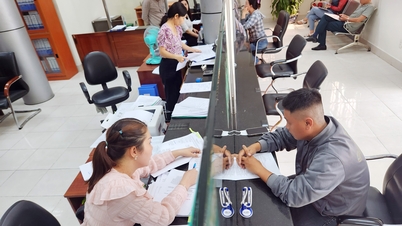

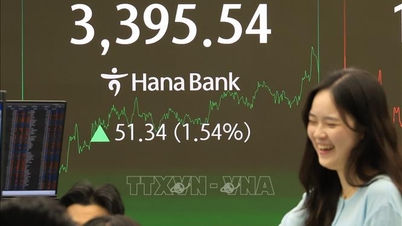



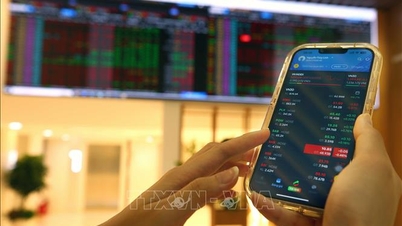

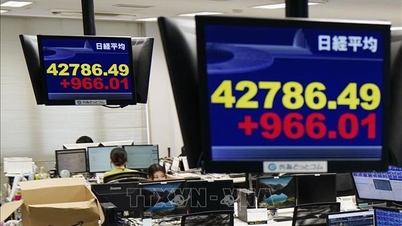



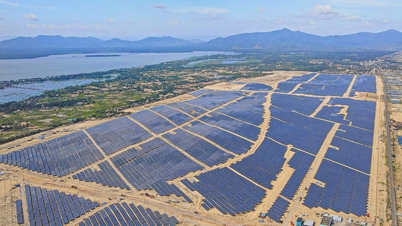

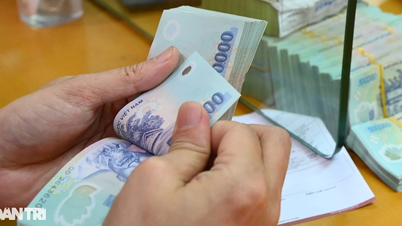



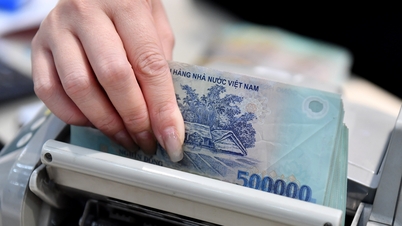








































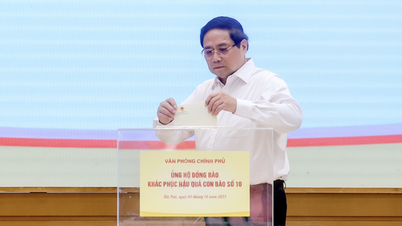




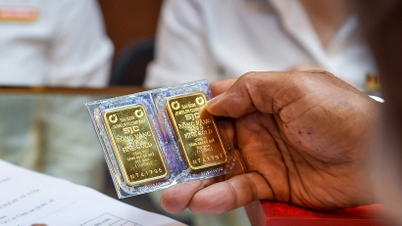



























Comment (0)